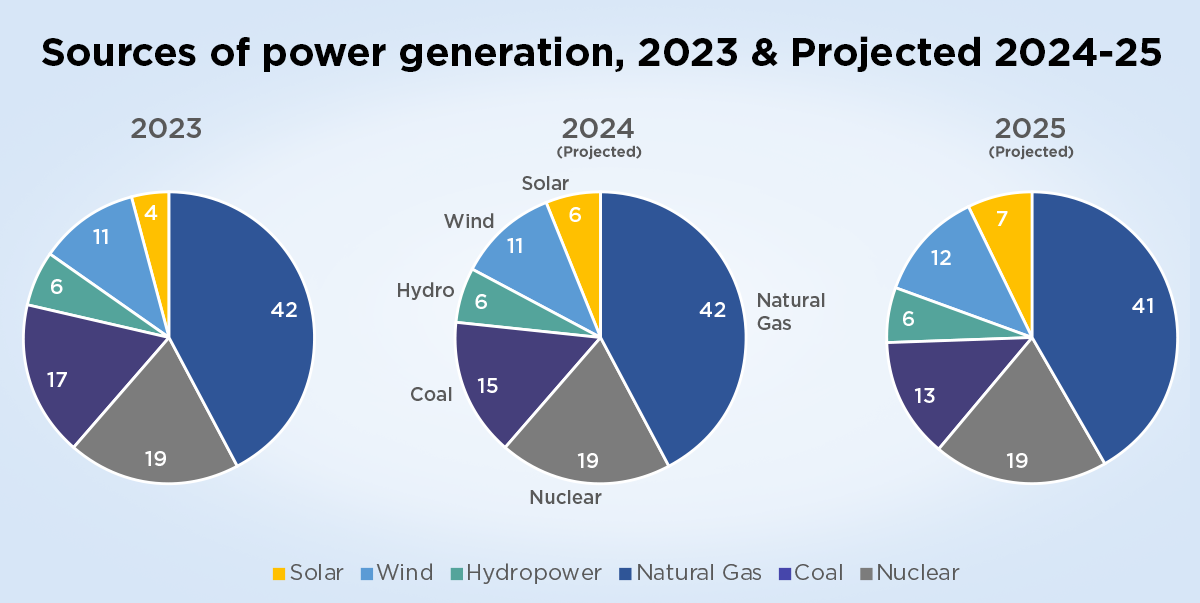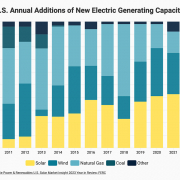Shift to Renewable Power Accelerates
According to the U.S. Office of Energy Efficiency & Renewable Energy (EERE), renewable power sources continued to add capacity to the grid during 2023. For 2023, added capacity will come primarily from solar (52%) and wind (13%), while batteries for stored energy will provide 17% of the new capacity. Natural gas is the only fossil fuel type contributing to new capacity and will account for 14% of the total. In contrast, nearly 100% of the capacity being retired is based on fossil fuel, led by coal (62%) and natural gas (36%). A total of 56.1 gigawatts (GW) of new capacity is being added and 14.5 GW of current capacity are being retired for a net gain of 41.6 GW in capacity.
With the added capacity in renewable sources such as solar and wind power generation, the use of renewable power sources is expanding — though not nearly as rapidly as required to meet climate goals of limiting global warming to no more than 1.5°C – as called for in the Paris Agreement – emissions need to be reduced by 45% by 2030 and reach net zero by 2050.
Solar PV demonstrated the largest absolute generation growth of all renewable technologies in 2022, surpassing wind for the first time in history.
This generation growth rate matches the level envisaged from 2023 to 2030 in the Net Zero Emissions by 2050 Scenario. As a result, the International Energy Agency has upgraded solar PV growth from “more effort needed” to “on track.”
Learn more about how VerdeWatts helps communities with microgrids that add solar power generation and improve resilience.










